Luang Prabang is a UNESCO heritage site in northern Laos, and is a gem that is yet discovered by many travellers. Currently touted as a backpackers’ haunt, Luang Prabang has all the potential to become a respectable tourist venue with its rich history, beautiful sites, impressive cuisine and warm hospitality.
Here are ten things you can do when you visit Luang Prabang.
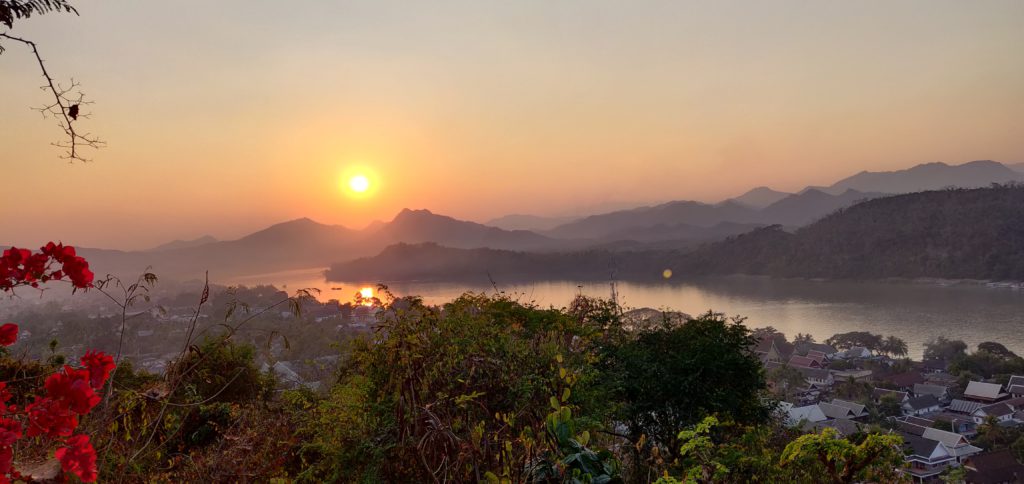
Watch Sunset on the Sacred Phousi Hill
Phousi Hill is a small hill in the centre of the old city of Luang Prabang. Only 100m high, it is still some climb by steps. Nestled on the hill is a monastery and on the way up, are small pavilions, statues of Buddha – which are most likely organised as a sort of pilgrimage.
Once you have made the 300 steps climb to the peak, you will be rewarded with an amazing panorama of the city. The layers of mountains in the horizon, the River Nam Khan flowing on one side and on the other side the mighty Mekong, and the Kingdom of Luang Prabang all as far as your eyes can see.

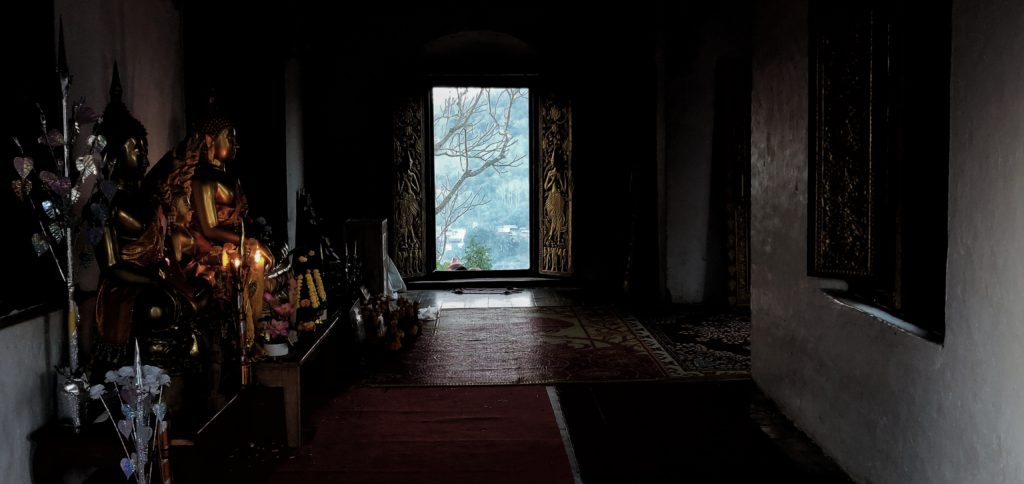
Many tourists come here to watch the sunset, which normally occurs early around 5:30pm, so be sure to come here by 5pm. It is usually very crowded, but the view is extremely rewarding.
The entrance fees at the time of writing is 20,000 kip (2 euros).
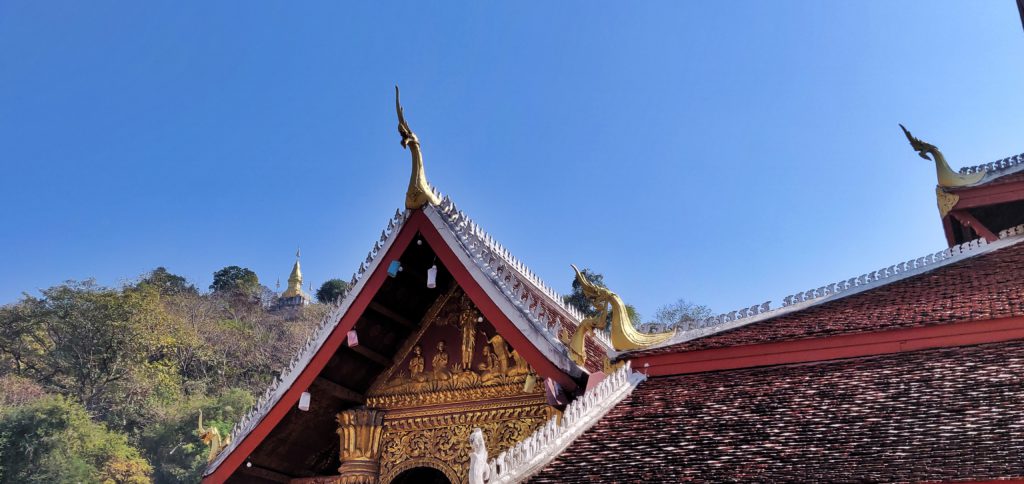
Explore the Stunning Temples of Luang Prabang on Foot
Luang Prabang is a very small medieval city you can explore on foot. This makes it extremely convenient and pleasant to explore the Buddhist temples that are dotted around the city. Apart from the Wat Tham Phou Si temple on the Sacred Phousi Hill and the gloriously golden Wat Chom Si on the summit, there are so many temples you can visit to experience the calm of religious life here and the artistry of the intricately carved decorations of the sites.
Wat Wisunarat is the oldest from the 16th century with large stupas.
Wat Xiengthong is a large complex with very ornate shrines and outer walls.
Wat Sene dates from the 18th century.
Wat Siphoutthabath looks more rundown yet charming.
Wat Pa Huak is filled with wall paintings.
Temples are normally free of charge but you are expected to be decently dressed when visiting.

Go on a Mekong boat cruise and visit the Pak Ou Caves
The Mekong is the twelfth longest river in the world and is the lifeline of the landlocked country of Laos. It provides the country with water for its agriculture, as well as an important way to transport goods and people.
A boat cruise will allow you to witness the breathtaking landscape of the Luang Prabang region and provide a glimpse of life along the river. The calm, the beauty, and the greenery put me in an instant state of zen. I no longer felt the pettiness of human interactions.

The boat trip along the Mekong will take you to the mouth of the Ou River known as Pak Ou. This is where the Pak Ou Caves are located, in the cliffs of the shoreline. There are two caves – Tham Ting (lower cave) and Tham Theung (upper cave). The upper cave contains the remnants of a more ornate sacred area and is deeper, while the lower cave is more populated by statues. I prefer the lower cave as it offers a view on the water. The origin of the Pa Ou Caves is unknown, but it has been a practice by traders and travellers along the Mekong to stop here to place a statue as an offering alongside their prayers.
You can easily book the boat ride and the visit to the caves at any of the tour agencies in town and they will pick you up from your hotel. The Mekong river is very cold in the morning, so be sure to bring a windbreaker or a pullover for the cruise.
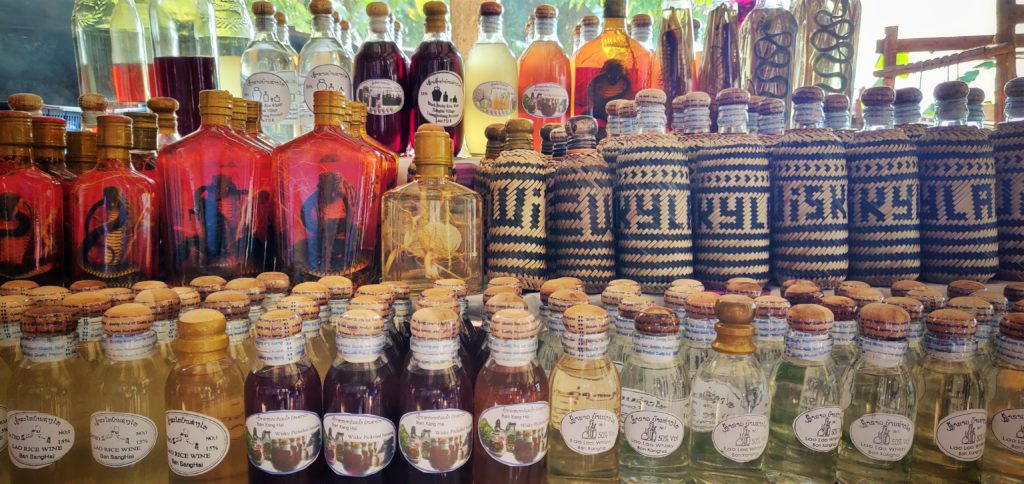
Drink a glass of Lao rice whiskey
Your trip along the Mekong river will sometimes include a visit to a very rural whiskey distillery. There, you will get to see how the Lao rice whiskey – called “Lau Lao” – is brewed. If you do not like a 45% strong drink, there are milder versions with cargo rice, or mangoes or bananas. There are also some versions with scorpions and snakes for those who like to explore their inner Bear Grylls.

Swim in the beautiful Kuang Si Waterfalls
I was unconvinced at first by the idea of visiting a waterfall. I have been to all the biggest waterfalls in the world, so why would a small waterfall outside Luang Prabang interest me? I was so wrong. The Kuang Si
Waterfalls are so mystical in appearance, you feel like you are in Avatar or some fairyland. The turquoise water comes from the surrounding forest and the falls are formed by levels of cascading pools. Beams of sunlight shine through the green foliage that envelops the pools, creating a mesmerizing never-ending light play.
The water is refreshingly cold, although it may be 30 degrees outside. When you enter the waters, do not be surprised by the gentle nibbling of your skin by the tiny fish that live in there! Some of them do get quite big, and those do look scary. But rest assure you are not in any mortal danger, like in Jaws. Some pools are very suddenly deep so do not enter if you cannot swim. The bottom of the pools are also very rocky and slippery, so you may want to wear those tight fitting rubber shoes for swimming.
Some things to note before you go: There are no showers, proper changing rooms nor clean toilets at the falls. The tracks by the falls get very muddy and slippery.
Theft is rife committed by both locals and western backpackers, so you may want to put your belongings in a water-tight bag and carry it with you into the pool.
I have seen several Chinese tourists taking photos of people in their swimwear. If you do not like dirty old men keeping images of you in wet swimwear, you should either confront them or just ignore them.
I wish the Luang Prabang authorities would do more soon to protect the falls. It is a delicate eco-system that is becoming very over-crowded. There should be proper sanitary and locker facilities that could be funded by higher entrance fees, and visitors should take a different path from the swimmers.

Visit the Luang Prabang Night Market and its rowdy Food Alley
The Luang Prabang Night Market suddenly springs up out of nowhere every night along the Sisavong Road. It is rather repetitive and many of the handy crafts sold are clearly mass produced. There are some hand-made things, but you will need to have a good eye for it.
What struck me at the Night Market were a few stalls selling handicrafts made of metal, melted down from the explosive remnants left by the US Army. Laos is the most carpeted country in the world, no thanks to the dark side of American foreign policy that no one seems to want to acknowledge. This has left Laos the most unsafe country in the world due to unexploded ordnance. Civilians, and especially farmers, regularly lose their lives after tripping on a mine. I wasn’t sure whether the metal truly came from the explosives and bombs, but the message of the suffering of the people of Lao is one that should not be left unnoticed by any visitor to the country.
At the one end of the Night Market by the Tourist Information Centre is the Food Alley. Like the Night Market, it springs into life only after nightfall. Here, you can experience authentic Lao street food such as barbecued pig ears, grilled river tilapias covered in salt, and the Luang Prabang version of the sai ua sausage. If you have a weak stomach like mine, do be careful of the low hygiene standards. But this should not prevent you from enjoying the hustle and bustle of the Food Alley.
Have a bottle of BeerLao and immerse yourself in the lights and sounds – This Is Life!
Oh, don’t forget to try those lovely tiny coconut pancakes!

Risk your Life by crossing a Bamboo Bridge and Watch the Rivers Mate
Actually, the bamboo bridges are quite secure. There are two bamboo bridges built across the Nam Khan River outside of the rainy season when the water level is low. They look really precarious but are quite ok to walk on. It costs around 5,000 kip (0.50 euro) to cross the bridge and you can explore the sleepy town on the other side of the river.
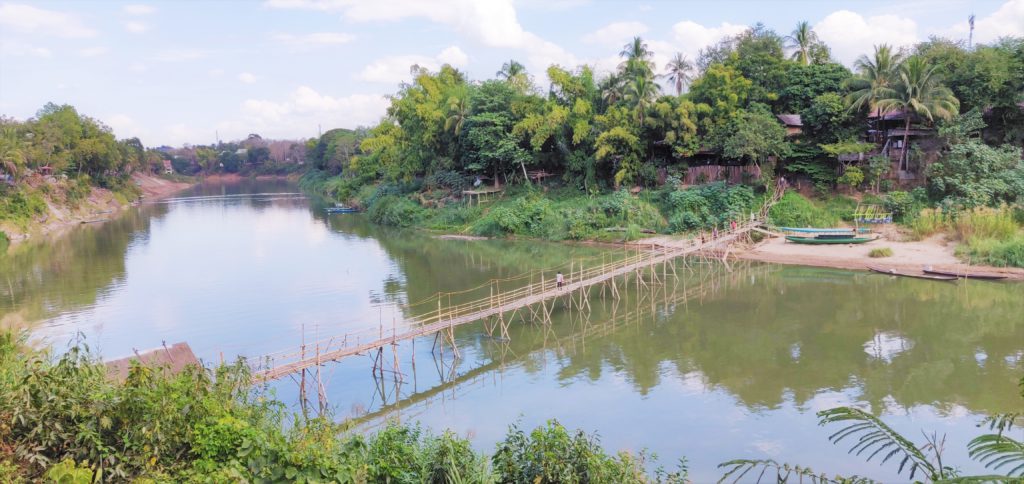
Here is a tip: At the far end of Khem Khong road, there is a restaurant called Viewpoint Cafe. This is a perfect spot with comfortable seats to watch the Nam Khan River flow into the Mekong. One of the bamboo bridges is built beneath this cafe.
Sit here to watch the two rivers merge, which is almost like a slow sensual lovemaking that never ends. Come here before nightfall, and watch the houses along the two rivers slowly lit up, the temple on the other bank as well as the bamboo bridge itself. It is totally mesmerizing.


This is almost the moment that you order a plate of crispy Mekong riverweed called Kai Paen. It is the riverweed harvested from the rivers, dried and fried and sprinkled with sesame seeds. It makes a perfect savoury snack to go with your BeerLao!
If you are cheap, you can sit in the Riverview Park next door to experience the same view.
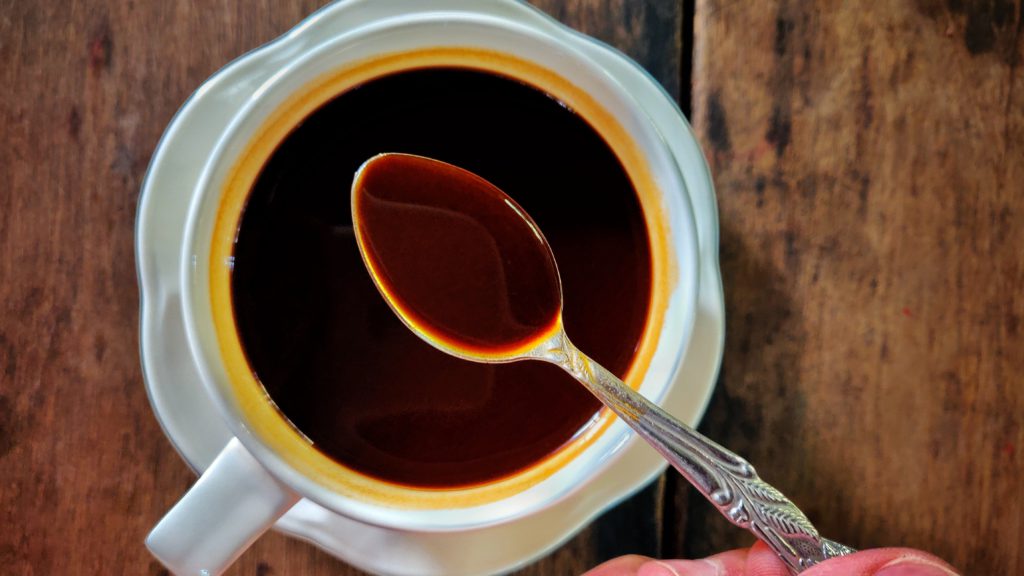
Drink Lao coffee
Do this before the world discovers Lao coffee. It is arguably the best coffee in the world, especially when you like dark roasted beans like me. The French discovered that the Bolaven Plateau in the south is great for coffee cultivation but years of war and turmoil have halted the process until very recently. Laotians like their coffee strong, so they roast it to the max.
Traditionally, Lao coffee is brewed in a sock and served with a LOT of sugar AND sweetened condensed milk. It comes out so thick, almost like hot chocolate!
You can certainly try this at any of the coffee stalls along the road. For something less filling, head to one of the many European-style cafes in town. My favourite is the Café Sinouk (www.sinouk-coffee.com). If possible, buy a few packs back!

Get a Bigger Penis by eating Black Ginger
Black ginger is the literal translation of “Krachai Dam” – a member of the ginger family commonly found in Thailand and Laos. Kaempferia parviflora is dark, almost purple in colour, and is used as a traditional medicine to enhance male libido and treat erectile dysfunction. Like Lao coffee, the world is slowly waking up to this herbal medicine which does not have the harmful side effects of the lab-produced ones like Viagra and Cialis. Black ginger is also known to increase grip power and athletes are starting to take notice. As if its benefits are not enough, long-term consumption of black ginger is found to increase the width and girth of one’s penis.
Dried slices of “Krachai Dam” can be purchased from some of the local shops in Luang Prabang. Or just buy a jar from the local D&T supermarket to try out.
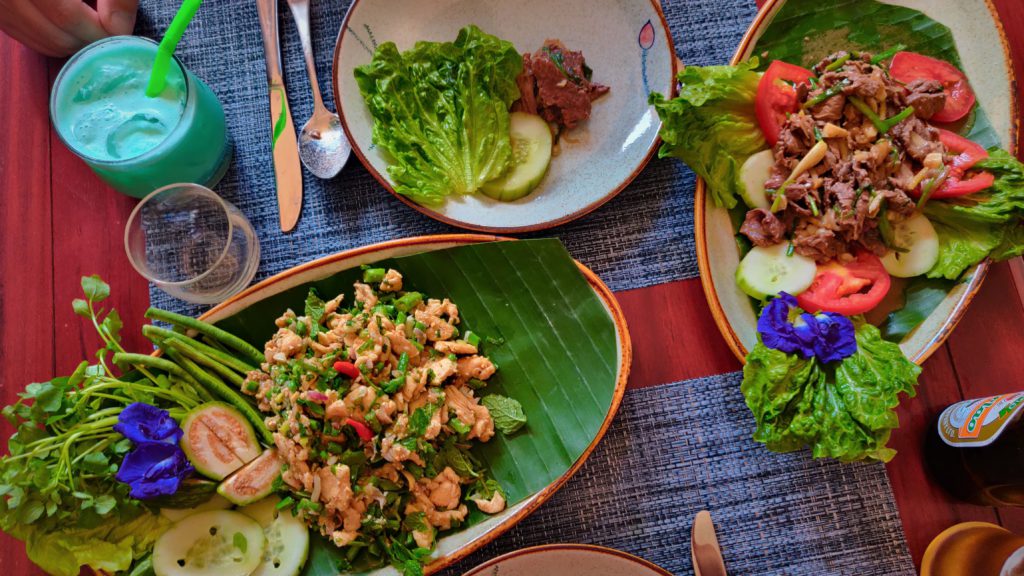
Experience Lao Cuisine in Luang Prabang
Lao and Thai cultures are closely related. Both languages belong to the Tai language group within the Kra-Dai language family. When you understand one, you will understand 90% of the other. This is even more true for Laotians who regularly tune in to Thai TV while southern Thais who have never been in contact with anyone in the north will find it difficult.
Likewise, Lao and Thai cuisines are closely related. Many of the dishes are similar, and the cooking methods, flavours, ingredients and presentation are mostly synonymous. Under the aggressive Siamese Kingdom, the Laotian Kingdoms were subdued and populations were forcefully transferred to the Khorat Plateau in the 17th century and underwent a prolonged period of siamification. The Lao identity is still stigmatised in Thailand and the language and geographical region are known by the name “Isan“. To this day, a Thai would still look down upon a Lao as a poorer less-developed brother.
Here in Luang Prabang, you will be able to experience Lao cuisine that you may have already tasted as “Thai Isan” food but in a purer form. Of all the dishes I like, here are some must-haves:
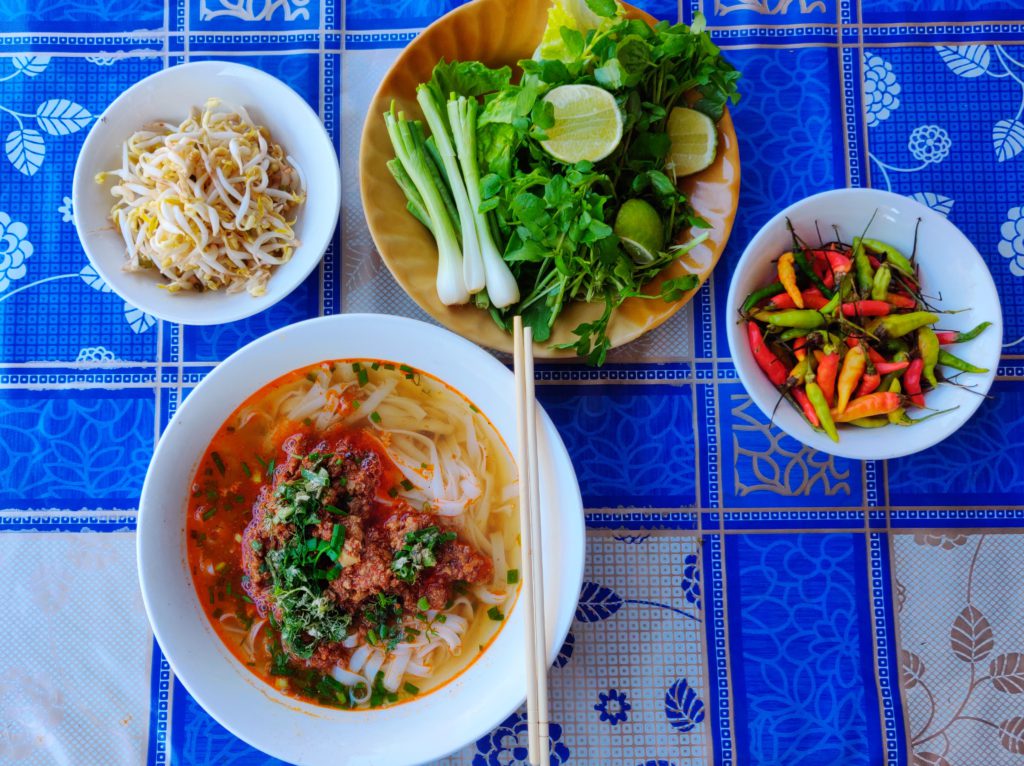
Khao Soi ເຂົ້າຊອຍ
This dish tastes different from its Thai version. Basically a noodles soup with flat rice noodles, it almost tastes like Bolognese sauce when it is topped by a slightly spicy minced pork sauce. This is a Lao staple and is best eaten at a roadside stall while sitting on a plastic stool!

Khao Piak Sen ເຂົ້າປຽກເສັ້ນ
Like Khao Soi, this is another must-try Laotian street food. Mostly prepared with chicken, it is a clear soup with typical Lao thick rice noodles. Like all Laotian dishes, Khao Piak Sen is served with a generous amounts of fresh vegetables that you can either put in your soup or eaten as a side. Both Khao Soi and Khao Piak Sen are breakfast or lunch food.

Khao Niao ເຂົ້າໜຽວ
Called “Sticky Rice” colloquially but its formal name is “glutinous rice”. This goes with all Laotian meals and is served in a cute weaved basket. Take what you need out of the basket then cover it, as the rice dries up and hardens very quickly.
Or Lam ເອາະຫຼາມ
This soup originates in Luang Prabang and is made with wild forest greens and a numbing pepper similar to the Sichuan pepper.
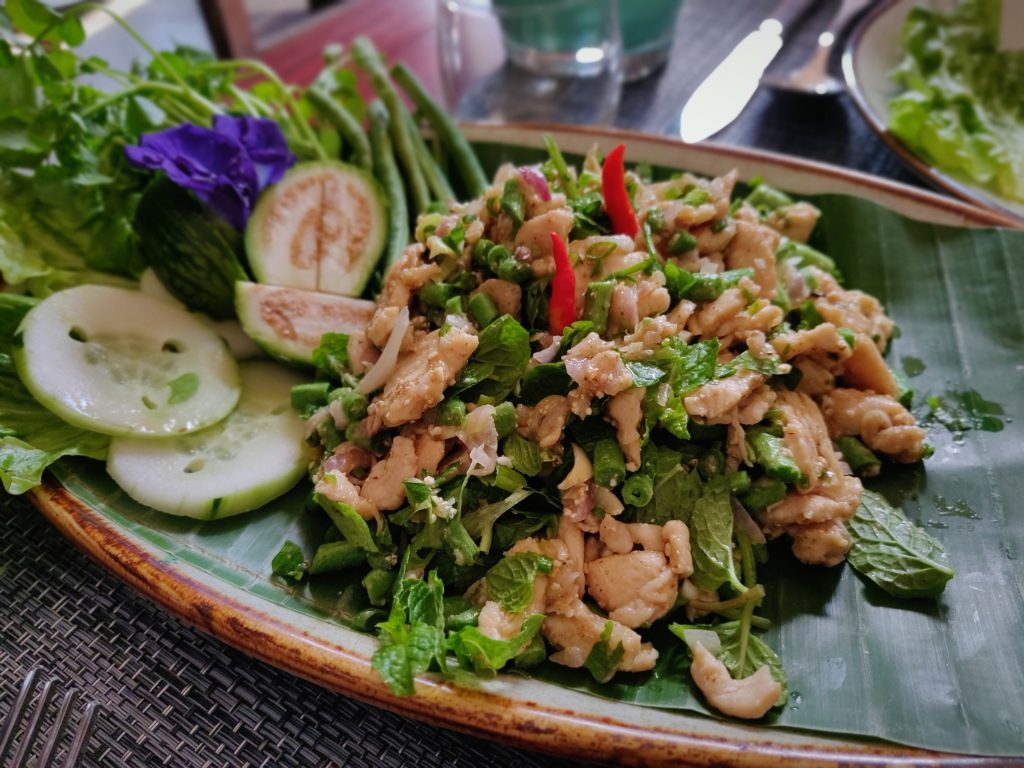
Larb ລາບ
Larb is quintessentially Laotian. Cooked minced meat such as chicken or pork is mixed with mint, basil, fish sauce, pepper, chilies and ground toasted crispy rice (Khao Khua ເຂົ້າຂົ້ວ), then eaten wrapped in a variety of raw greens like lettuce, cabbage, and long beans. There are also raw versions of Larb, and this dish is likewise common amongst the related Dai people in Yunnan, China.
Tam mak hoong ຕຳໝາກຫູ່ງ
You will most likely have eaten this dish in Thailand where it is known as “som tam” – green papaya salad. Its Thai name is more accurate etymologically, as “tam som” in Laotian means “pounding [of] sour [ingredients]”. Most likely, this dish is one of the forms of a pounded salad dish that is very common among all the Tai peoples, from the Lao to the Siamese and Lanna in Thailand and the Dai in China.
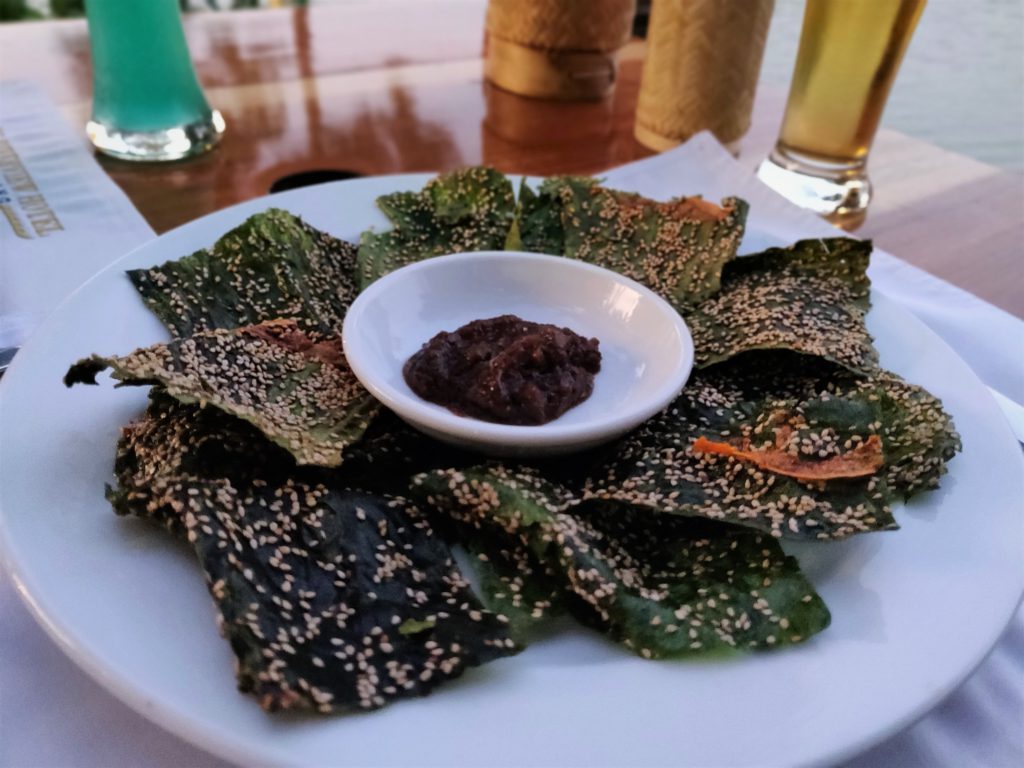
Kai Paen ໄຄແຜ່ນ
See above. Eaten with Jaew Bong ແຈ່ວບອງ chili dip.
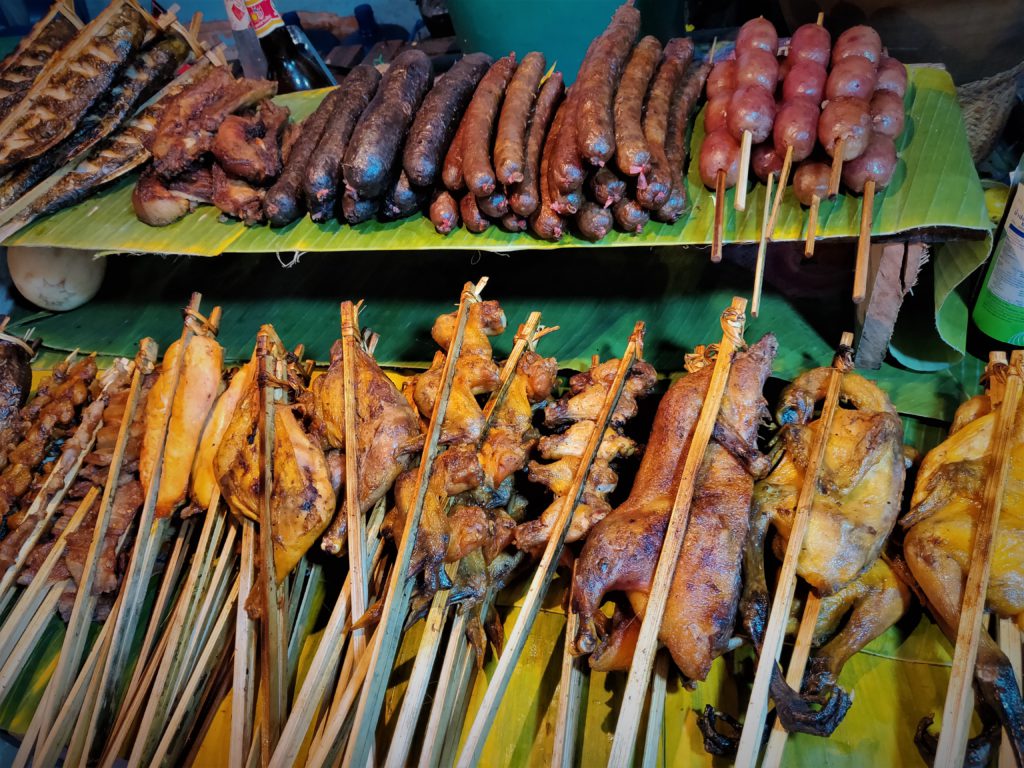
Ping Kai ປີ້ງໄກ່
Called “kai yang” in Thai, the word that means “grilled chicken” has come to mean grilled everything. “Ping Pha” means “grilled fish”. You can have the most authentic Lao barbecue in the Food Alley at the Night Market in Luang Prabang. Note that Laotians prefer very dry barbecue. This is because they use hands to dine in their food culture and dry meat is easier to break and does not generally drip. Have your grilled chicken with sticky rice and green papaya salad to make a complete Laotian meal!
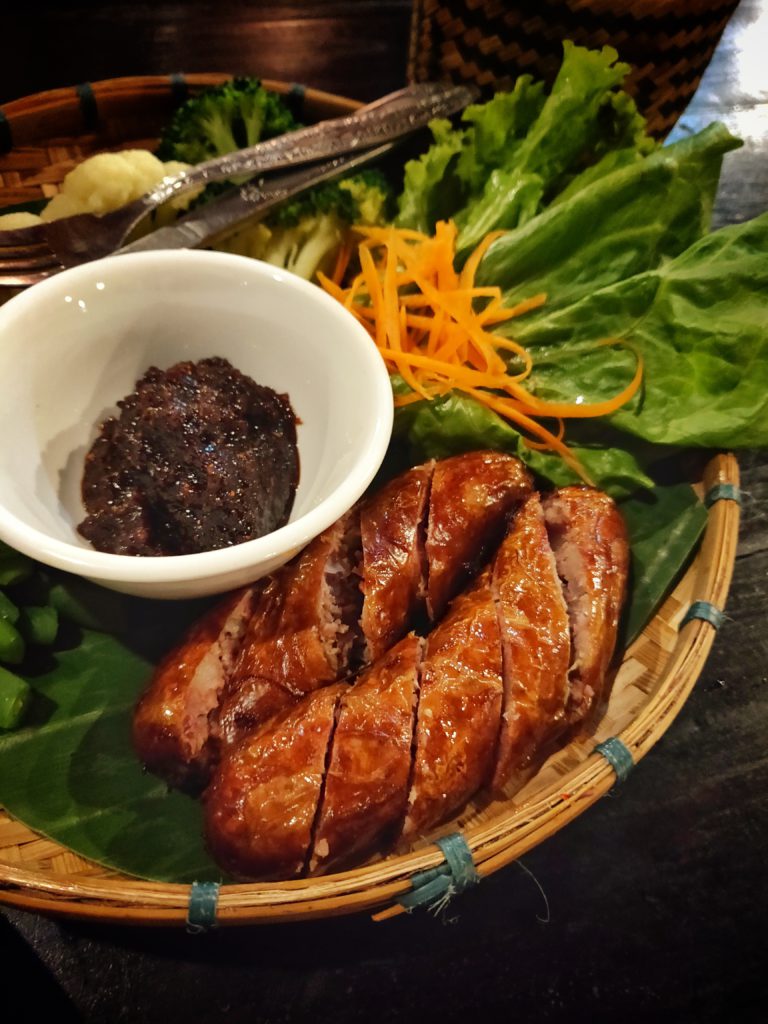
Luang Prabang sausage: sai oua and sai gok
You will most likely have tried this meaty and aromatic sausage in Thailand, but let it be known to the world: Luang Prabang is the epicentre of the Sai Oua sausage. Mostly made with pork and sometimes with beef, this is a juicy, spicy, hearty sausage that when grilled, fills the air with instant hunger pangs. The names “sai oua” and “sai gok” are used intermittently, although “sai gok” means “sour sausage” referring to a more fermented version of the sausage.
Note that the sausages are normally served with sticky rice to make a meal.

Ho Mok Pha ຫມົກປາ
Steamed fish custard wrapped in banana leaves. This is one of my favourite dishes as it reminds me of a Singaporean dish called otak otak. The Lao version uses the tilapia fish from the Mekong and is much lighter compared to the Thai version called Hor Muk Pla ห่อหมกปลา.
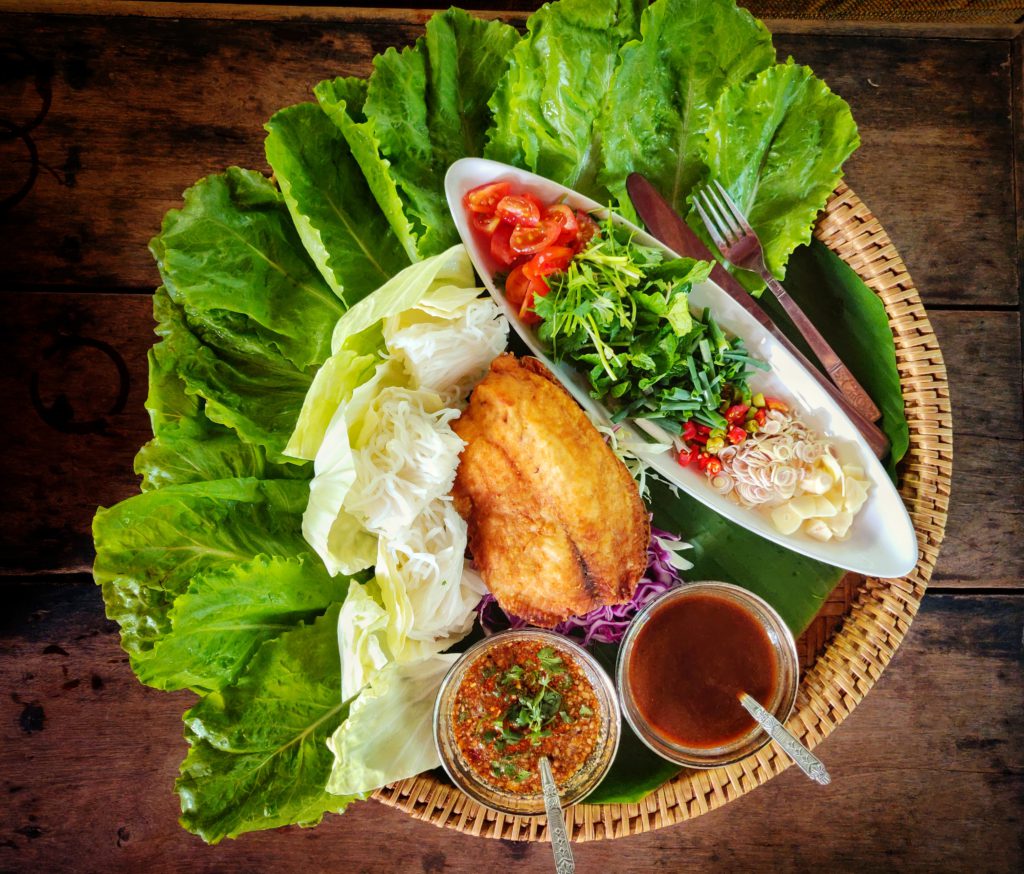
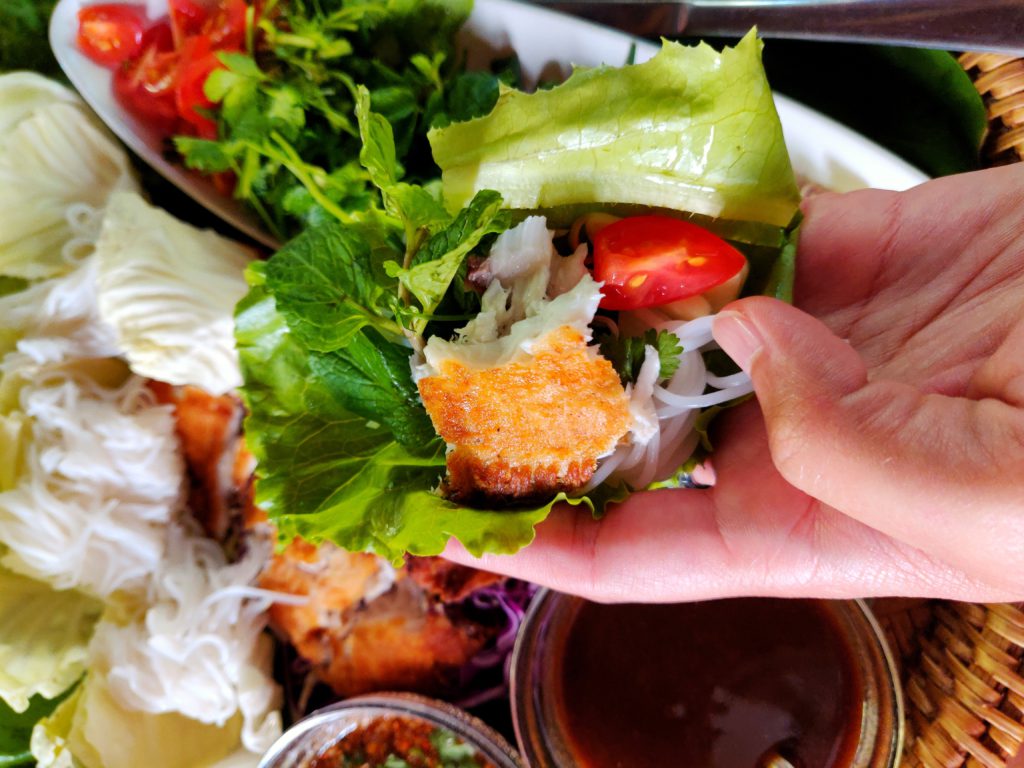
Phan Pha
“Phan Pha” is “Ping Pha” (grilled tilapia) served as a “pha kao“. It is grilled fish, eaten wrapped in a variety of fresh greens and with a serving of Jaew Bong ແຈ່ວບອງ chili dip. The best place to experience this in a beautiful restaurant called “Pha Khao Lao” run by a British-Laotian couple. More info on phakhaolao.com

Lao Table Barbecue
This is a must-try! It is a marriage between the Chinese hotpot and the Korean barbecue. The grill part is a convex mold island in a pot of savoury broth. You are served a plate of various meat such as pork, chicken and beef, with an abundance of vegetables, glass noodles and two eggs. There is a piece of pork lard you place on top of the grill to grease it. Every time you grill a piece of meat, the juices flow into the broth to add to the taste. Place the vegetables, noodles and eggs in the broth to cook. At the end of the grill, you will have an amazingly tasty soup filled with meaty goodness!
Lao Food Culture
There are some culinary schools where you can learn Lao cooking, they also run as restaurants so you can first taste what the level is like. The most famous one in Luang Prabang is the Tamarind. Visit tamarindlaos.com.
Laotian food was first eaten with hands, and can still be enjoyed in this manner. Note that noodles soups are eaten with chopsticks. The beautifully woven bamboo platforms you sometimes see are called “ka toke“. Once food is served on a “ka toke”, it becomes a meal known as “Pha Khao“. Diners sit cross-legged around a “Pha Khao” to share a meal together. A “Pha Khao” is often served with one or more tiny baskets of sticky rice. Laotian meals are served with an abundance of fresh vegetables. It is not because it is a poor country so people cannot afford more meat. Rather, vegetables are concerned a key component of a meal and is often used to wrap around meat and rice.
To me, Laotian cuisine is a very enlightened cuisine, it is delicate yet wholesome, cleverly balances herbs, spices and condiments, and always surprises with a variety of very different tastes.
I always feel good after a hearty Laotian meal, and it never gave me any digestive issues or feeling of bloatedness. Lao cuisine favours savoury to sweet and avoids a combination of that in contrast with their Thai sister cuisine.
Some tips before you go to Luang Prabang
Money changers
Not many places accept credit cards in Luang Prabang so it is best to bring along cash and change them at money changers. Check out the rates displayed by the money changers along the Sissavong road before you change them. The rates can be very different.
Be respectful
Do not be an ignorant fool like many of the self-entitled backpackers – “bratpackers” – I see in Southeast Asia, and there are tons in Luang Prabang. No one owes you a living and certainly do not have to pay for your travels. Do not bargain, as prices are already very low. Laotians do not expect a tip but do welcome them. Learn a few words of Lao and try to show you are most willing to learn and understand their way of living and their culture. Nobody cares if you are an Instagram influencer or are searching for your soul, so do not think anybody has to cater to your whims while it is very much the other way around.
Speak Lao
“Sabaidee” means “hello” and “khap chai” means “thank you”. If you are really grateful, say “khap chai lai lai“.
A few words of Lao go a long way.
Support local businesses
As with budding tourist destinations, locals get pushed out by non-local and often abusive competitors in Luang Prabang. Support local Luang Prabang businesses by eating at streetside stalls, local restaurants and cafes, and stay at locally-owned hotels. There are hundreds of tour operators, unfortunately most of them from outside of Luang Prabang and even from neighbouring countries. The reality is that not much of the revenue comes back to the locals. I recommend Manifa Travel Adventure Tours as it is locally owned.
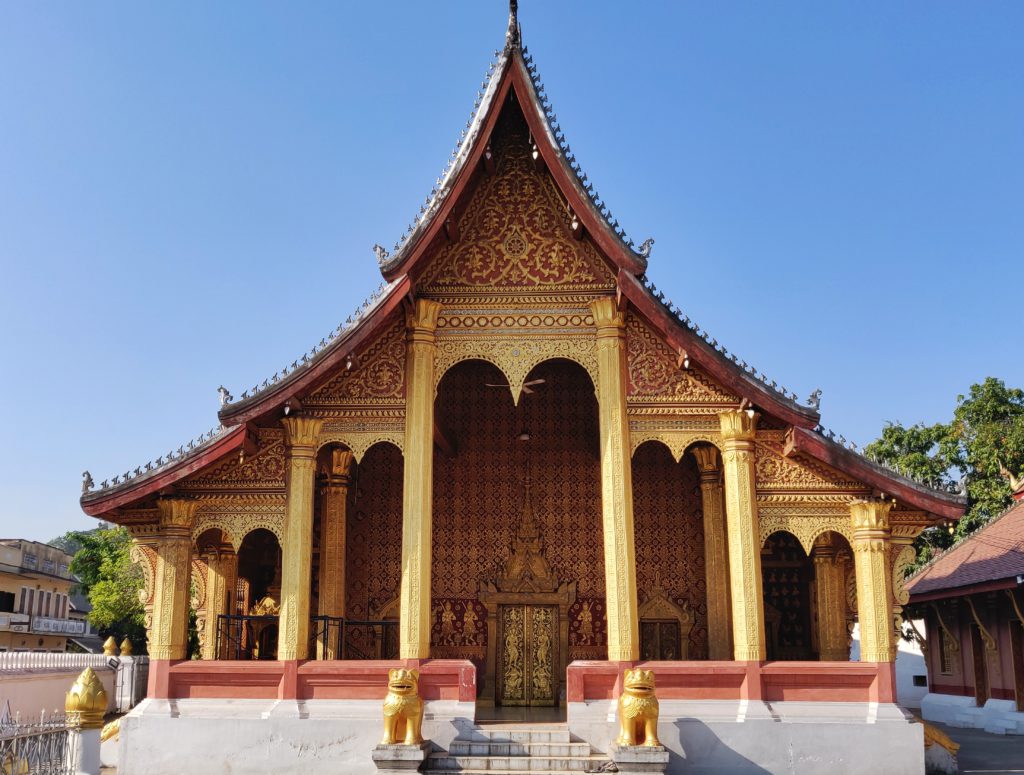

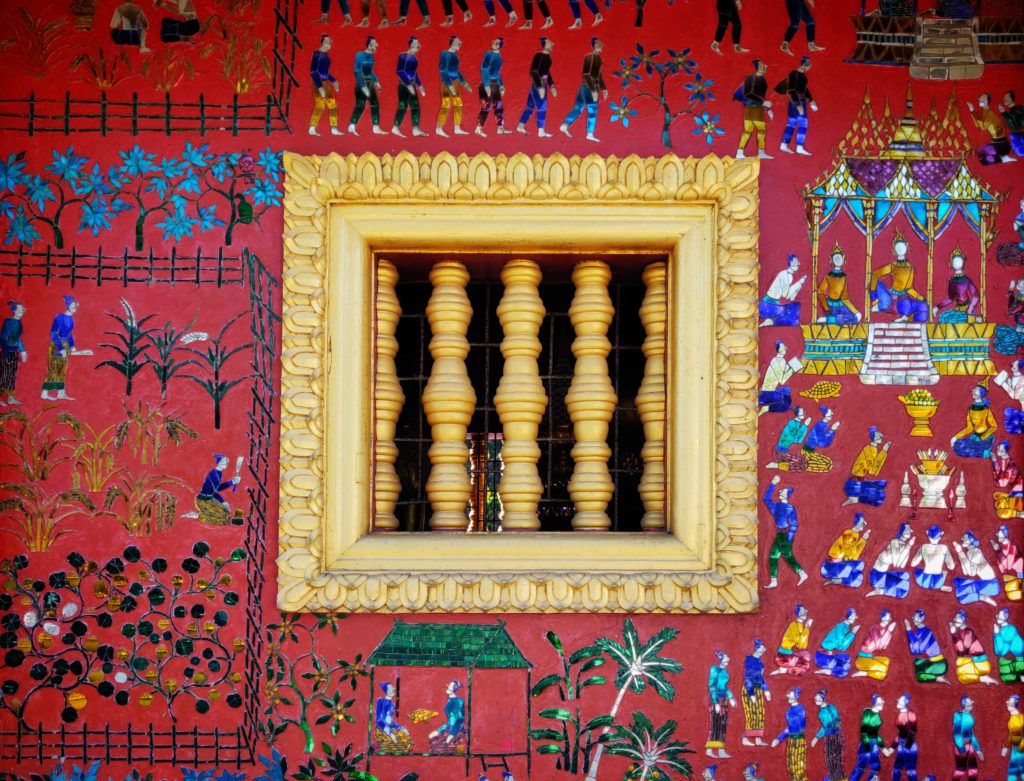
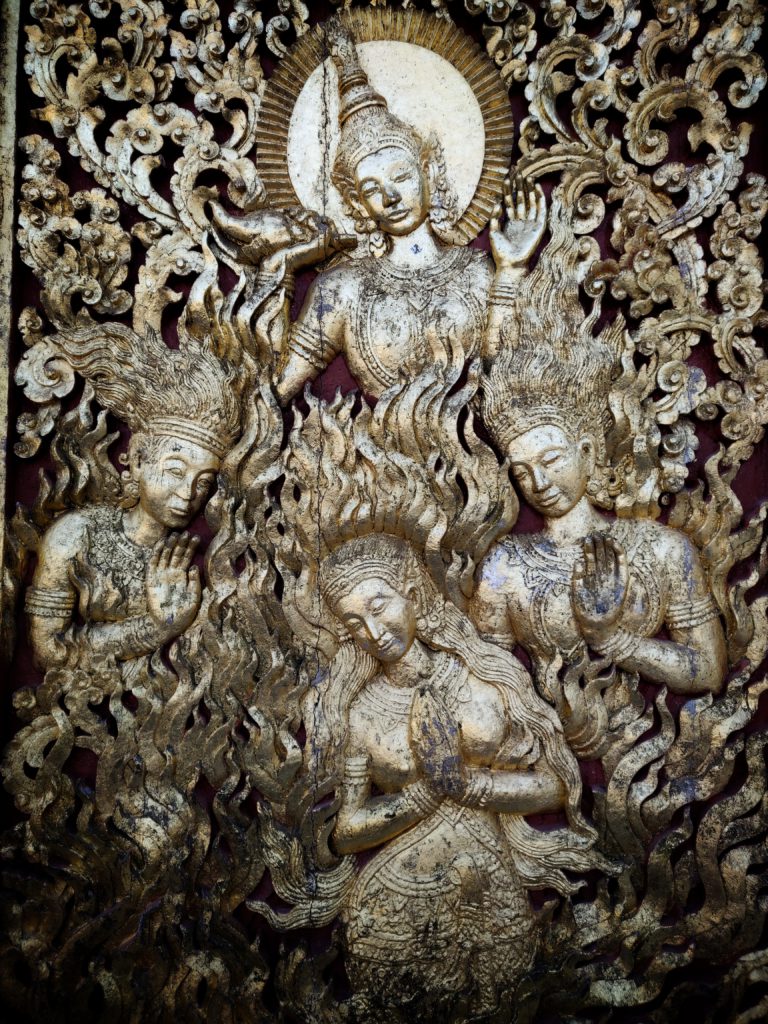

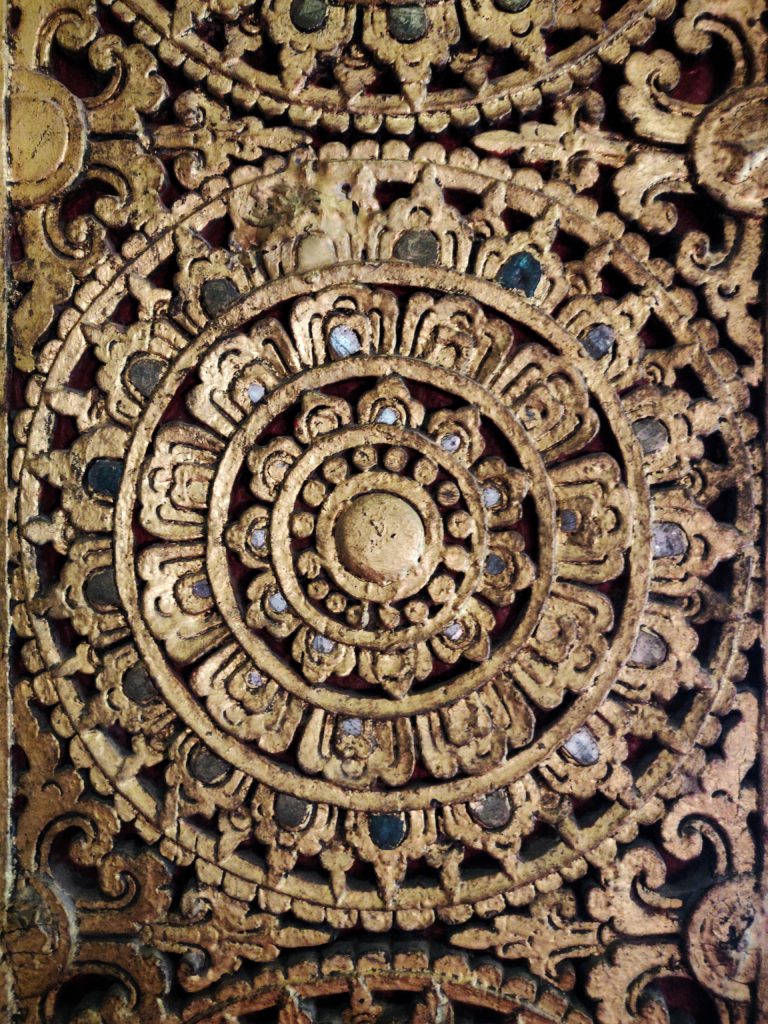

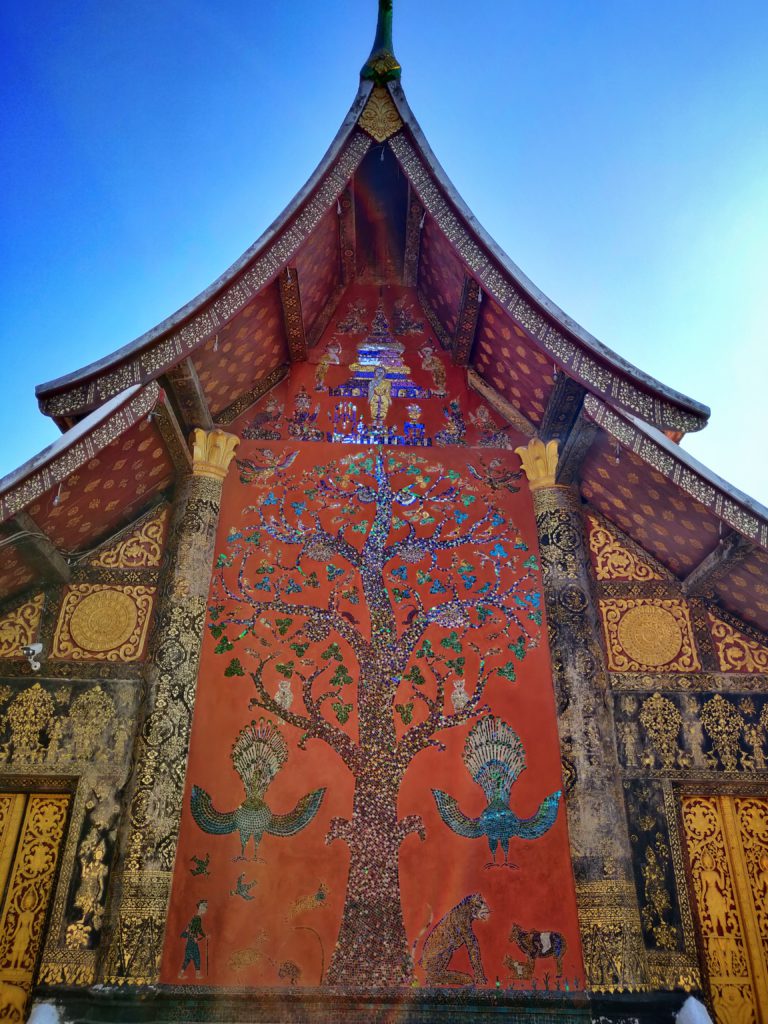



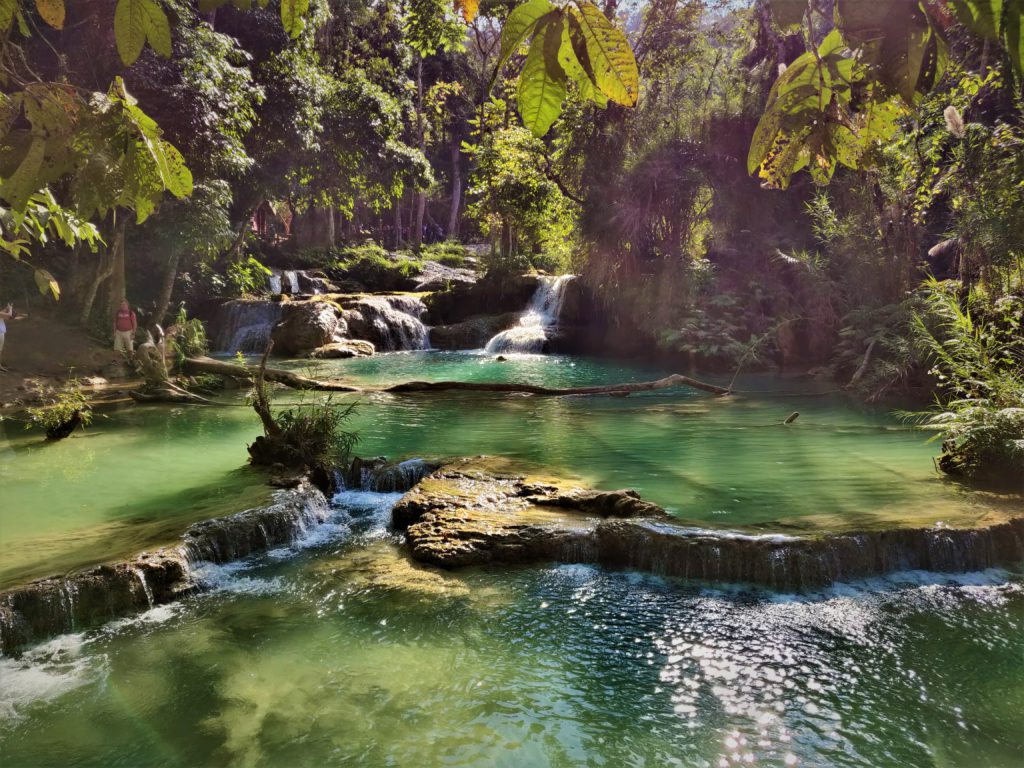
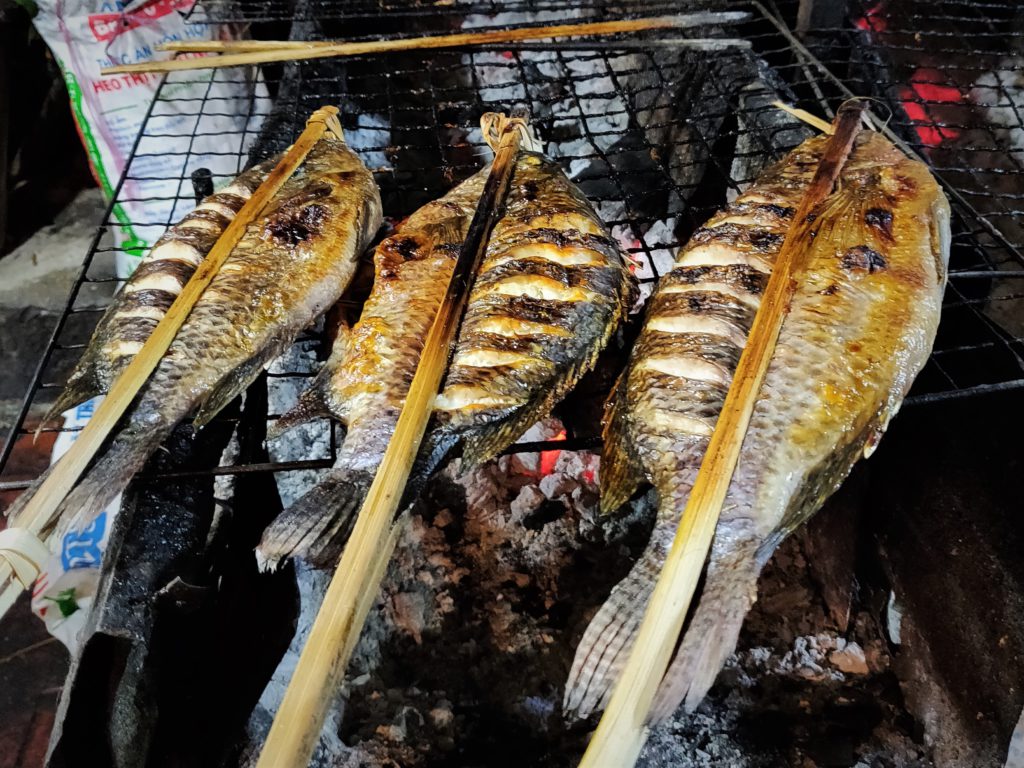


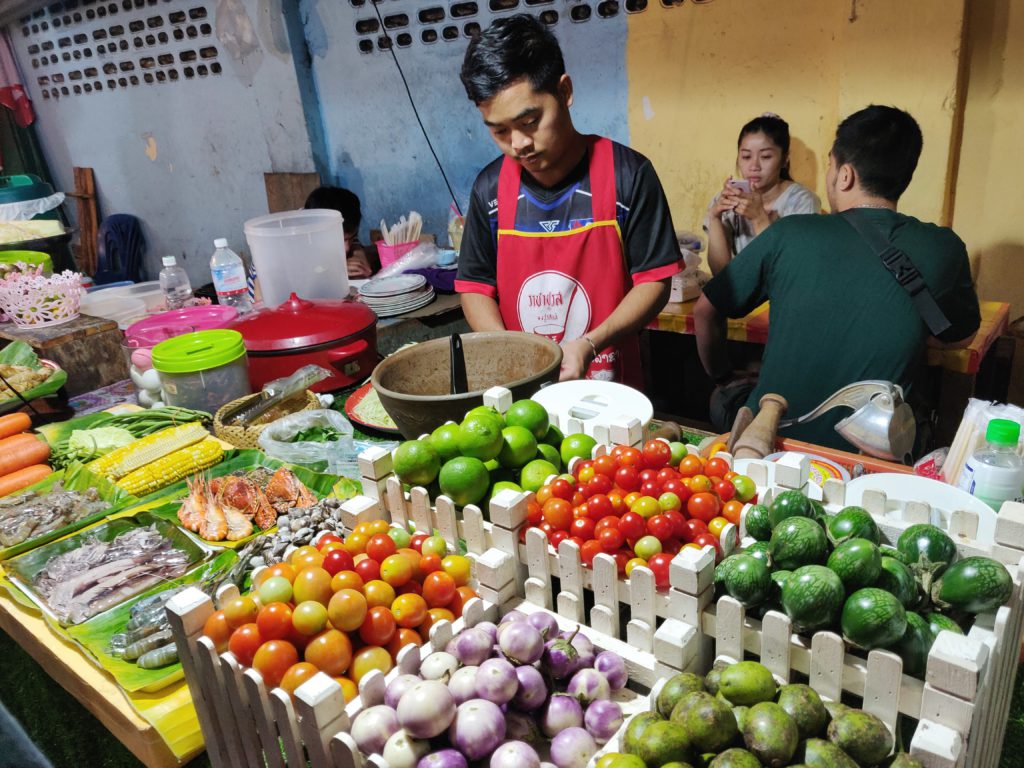
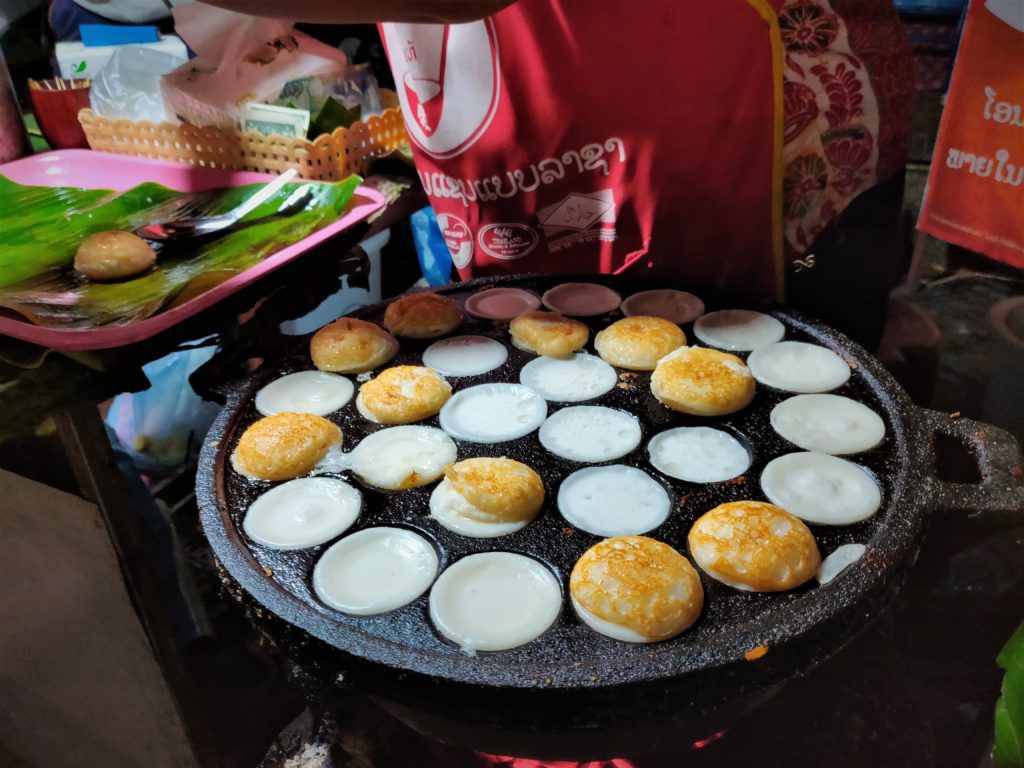

3 Comments